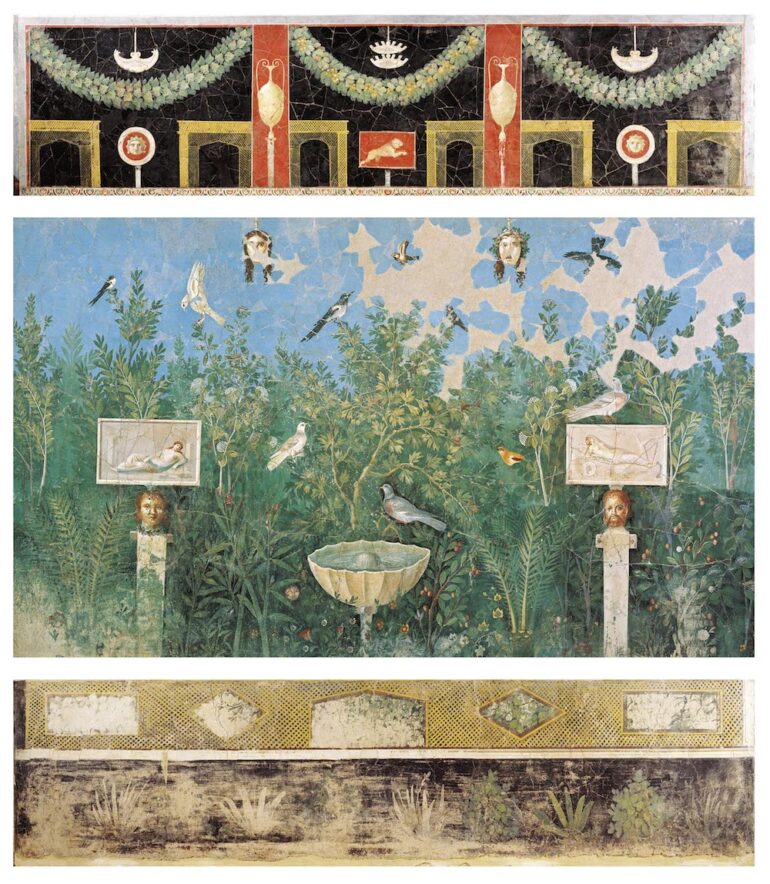A unique experience that allows visitors a vivid glimpse of the past
Till January 6th, the Scuderie del Quirinale invites you to visit their new and ambitious exhibition Pompeii and Santorini. Eternity in a Day. Bringing together remarkable archaeological finds from two ancient cities that both suffered volcanic catastrophes – Santorini in 1613 BCE and Pompeii in 79 AD – the exhibition presents itself as a unique experience that allows visitors a vivid glimpse of the past. With the inclusion of modern and contemporary artworks, the Scuderie del Quirinale offers an impressive juxtaposition of the ancient and the modern that covers a span of 3500 years, from the late Bronze Age up until the present day, allowing you to explore the theme of the volcanic eruption throughout time and in different contexts.
With over 300 exhibits that cover more than three millennia, the highlights on display in the large rooms of the Scuderie del Quirinale are many. Thematically, the exhibition covers a variety of topics, ranging from the artistic production of Pompeii and Akrotiri on the island of Santorini, the political and social structure of these two cities, as well as the everyday life and customs, themes which are vividly narrated through the remarkable artefacts that were preserved by the volcanic ashes.

Right before embarking on the exhibition tour, visitors can admire one of the more impressive exhibits, a large plaster cast of a horse lying on its left side, found north of the ancient city of Pompeii. Moving on, visitors will then be met with further finds from both Santorini and Pompeii, such as the wall painting showing three female figures, dated to the late Bronze Age (which personally answered my question of what colors go with royal blue – and will be updating my living room with that color accordingly), or the Pompeian bronze pots with rims still covered with lapilli, the rock material that is ejected during volcanic eruptions.
The next rooms, on the other hand, are dedicated to artworks preserved from Pompeii that allow visitors to gain insight into the Roman domestic sphere. Highlights include a wall painting showing Venus on a quadriga drawn by elephants, and a wall painting with satyrs, still lifes and mythological scenes, which also show graffiti made by children in the lower part. The section concludes with a room displaying the wall decorations from the large dining room of the House of the Gold Bracelet, dated to the second quarter of the 1st century BC. Wonderfully preserved, the wall paintings show luxuriant garden scenes with trees, birds, and plants. The presentation of these wall paintings, however, becomes especially intriguing by a painting by Andy Warhol showing the eruption of Vesuvius (1985), which is directly visible through the rectangular window in one of the antique wall paintings.

Upstairs, the immersive exhibition continues with artefacts that explore the ancient city of Akrotiri on Santorini, like Pompeii buried by a volcanic eruption. Visitors can admire vases and vessels of all shapes and sizes produced both for ritual and everyday usage, as well as wall paintings, such as the one showing young fishermen or the “Naked Boy” wall painting. These objects, for the first time on display outside their native Greece, attest to the sophisticated and artistically rich culture of Akrotiri.

The Eruption of the Souffrier Mountains, in the Island of St Vincent
1815
Oil on canvas
Liverpool, University of Liverpool – Victoria Gallery & Museum
TW0352 Butlin & Joll 132.
The exhibition concludes with a final and evocative section that aims to create a connective view of the volcanic disasters of Akrotiri and Pompeii in juxtaposition with modern artworks. Haunting casts of children and crouching adults, caught in the act of seeking safety, are set against modern interpretations of the theme of the volcanic tragedy and explorations of mortality, such as Damien Hirst’s Untitled Black Monochrome (1997), a canvas covered entirely with the dead bodies of flies, and Alan McCollum’s The Dog from Pompeii (1991). In addition, the exhibition also tries to delineate the theme of the volcanic eruption as a continuous source of artistic inspiration by showing paintings by several artists, among which Turner (1815) and Renato Guttuso (1933), that deal with the aesthetics of the destructive powers of volcanic eruptions. Under the theme of rediscovery – “Eternity has been found again” – visitors then come to the end of their immersive journey with artworks such as Vesuvius Circle (1984) by Richard Long and Filippo Palizzi’s Fanciulla pensierosa negli scavi di Pompeii.
Till January 6th, 2020
Scuderie del Quirinale
Via XXIV Maggio, 16 (Monti)
Opening hours: Sun-Thu 10am-8pm; Fri-Sat 10am-10.30pm
Entry fee: €13 – 15





